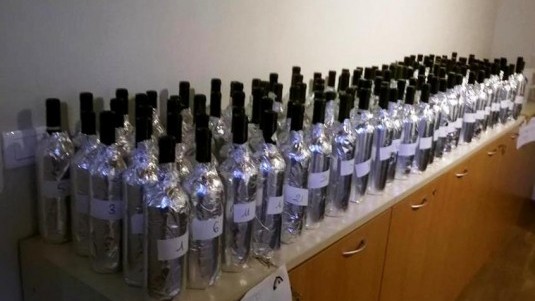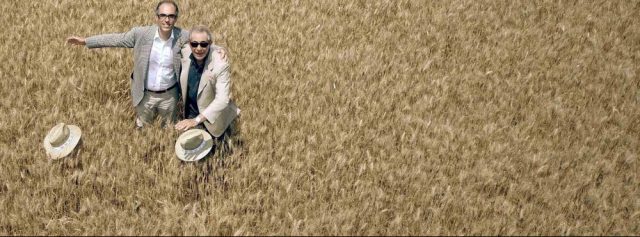Brunello 2012, the ones not to miss

At the end of January we went to Montalcino to taste the new vintages coming out this year: Brunello 2012 and Brunello Riserva 2011. Following our first impressions of last autumn, we can now draw more precise conclusions even if they do not differ that much from those of a few months ago. The overall quality has improved and we divided the wines into categories given that we tasted over 140 Brunello 2012, 40 select wines from 2012, 30 reserves 2011 and several Brunello 2011 which have only now reached the market and, finally, two 2010 reserves.
The good news comes from vintage 2012 which has a very high average level of quality that, in some cases, is superb. In regard to the growing number of select wines in the tasting, this is a trend I hope will continue because it limits the number of reserves which, while a classic classification, does not allow the wine lover to fully comprehend Brunello’s many nuances. To be honest, I do not understand the resistance of some producers to divide Montalcino into zones. If you produce an estate cru then it is clear that you consider a vineyard to be better or at least different from the rest and thus deserves to produce its own, independent wine. This means basically that you are mapping out and zoning your own estate and so why not zone the whole territory? A Brunello mystery.
Another evident novelty is that a silent innovation-revolution is taking place that is creating new and extremely interesting horizons for the future of Brunello. An ever-growing number of producers, in fact, are taking up the challenge represented by the Brunello’s aroma over time. Their aim is to extend the lifespan of Brunello’s most recognizable aromatic trait, the scents of various types of cherry. This is done not at the expense of the bouquet’s more classic floral notes or those of tobacco and autumn underbrush but only delaying their inevitable dominance by a few years. This challenge also involves tasters who must modify their aromatic parameters when evaluating the wine’s organoleptic properties. What I find interesting is that this quest is involving producers who have very different aging styles. This being the case, I think it best to refer to innovators and traditionalists and not the more trite differentiation between those who use small barrels for aging and those who use big ones.
One last thing, for me there are too many 2011 reserves, the majority of which are not that interesting and only a few are intriguing. The 2011 harvest, in fact, was not one that merited producing a reserve, except in some very precise areas.
Below is a list of the Brunello that impressed us the most, beginning with the ‘stock’ 2012 vintages followed by the select wine of the same vintage and then some reserves.
Brunello di Montalcino 2012
97
- Argiano
- Poggio di Sotto
96
- Biondi Santi Il Greppo 2012
- Giodo
- San Polo
95
- Caprili
- Ciacci Piccolomini
- Fanti
- Pietroso
- San Carlo
- Valdicava
94
- Canalicchio di Sopra
- Fattoi
- Fuligni
- Lisini
- Matè
- Poggio Antico
- Uccelliera
93
- Bosco di Grazia
- Casanova di Neri
- La Fortuna
- Le Chiuse
- Madonna Nera
- Piancornello
- Salicutti
- Sassodisole
- Ventolaio
Brunello di Montalcino Selezione 2012
97
- Caparzo, La Casa
- Siro Pacenti, Vecchie Vigne
96
- Casanova di Neri, Tenuta Nuova
- Le Ragnaie, Vigne Vecchie
- Tassi, Franci
95
- Altesino, Montosoli
- Il Marroneto, Madonna delle Grazie
- La Fortuna, Giobi
- Mastrojanni, Vigna Loreto
- Poggio Antico, Altero
- San Polino, Helichrisum
- Silvio Nardi, Poggio Doria
- Tiezzi, Vigna Soccorso
94
- Camigliano, Passaggio Inatteso
- La Fornace, Origini
- Rodolfo Cosimi, Bramante
- Ventolaio, Il Colle del Fante
93
- Castello Romitorio, Filo di Seta
- Ciacci Piccolomini, Pian Rosso
- Villa i Cipressi, Zebras
92
- Cava d’Onice, Colombaio
- San Filippo, Le Lucere
Brunello di Montalcino Riserva 2011
95 - Banfi, Poggio alle Mura Riserva
93 - Luca Brunelli, Riserva
Brunello di Montalcino Riserva 2010
97 - Col d’Orcia, Poggio al Vento
93 - Sassodisole, Riserva

 Italiano
Italiano








